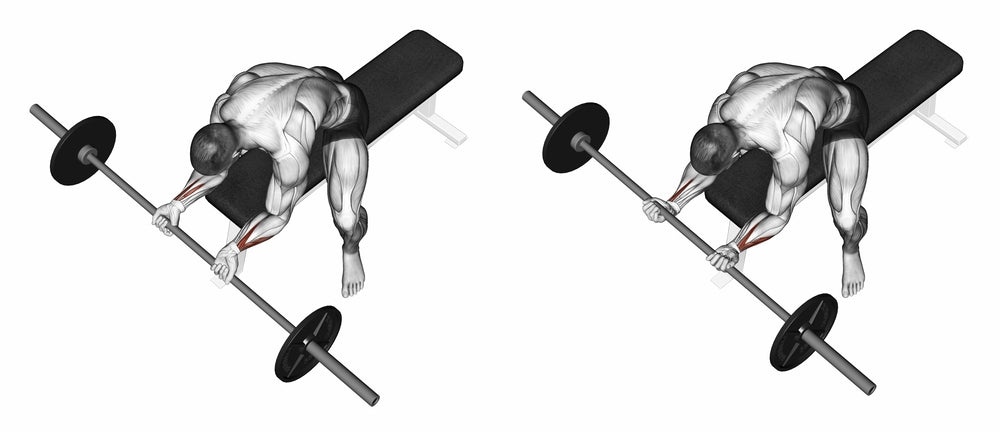Exercise Anatomy
Wrist Curl (Wrist Flexion)
The Wrist Curl, focusing on wrist flexion, is a simple yet effective exercise to strengthen the muscles in the forearm and enhance grip strength. Its unique aspect lies in isolating the wrist flexors, crucial for activities requiring a powerful grip, like lifting weights or holding onto sports equipment. Incorporate this exercise to build forearm strength and improve overall wrist stability, ultimately contributing to better performance in various daily and athletic tasks.

Major Muscles and Actions Involved
During the Wrist Curl, the primary joint action is wrist flexion, where the palm moves towards the anterior aspect of the forearm. This movement primarily targets the wrist flexor muscles, including the flexor carpi radialis, flexor carpi ulnaris, and palmaris longus. Additionally, the finger flexors and other forearm muscles contribute to the overall stability and control during the exercise.

Sports Uses
The Wrist Curl, focusing on wrist flexion, is particularly beneficial for athletes involved in sports where grip strength and forearm endurance play a crucial role. Weightlifters, for instance, can enhance their ability to hold and control heavy weights during exercises like deadlifts and cleans. Additionally, rock climbers and wrestlers can benefit from the increased strength in wrist flexors, improving their ability to grasp and control surfaces or opponents. Tennis players and golfers, who rely heavily on wrist movements for precision and power, can also find value in incorporating Wrist Curls to enhance their performance in striking sports. Overall, this exercise proves advantageous for individuals participating in activities demanding a robust grip and forearm strength.
Exercise Tips
- Technique: Sit or stand with a neutral spine, holding a dumbbell or barbell with an underhand grip. Rest your forearms on a bench or your thighs, allowing your wrists to extend beyond the support.
- Range of Motion: Perform a controlled wrist flexion, lifting the weight by moving your palm towards the anterior part of your forearm. Ensure a full range of motion to engage the wrist flexors effectively.
- Amount of Weight Used: Begin with a light weight to master the form. Gradually increase resistance as your wrist strength improves, maintaining control throughout the movement.
- Grip: Adopt an underhand grip, keeping your wrists in a neutral position. Ensure a secure grip on the weight throughout the exercise to prevent slippage.
- Variations: Explore variations by using different equipment, such as dumbbells, barbells, or wrist curl machines. Each variation provides a slightly different stimulus to the wrist flexors.
- Unique Muscle Involvement: This exercise predominantly targets the wrist flexors, including the flexor carpi radialis, flexor carpi ulnaris, and palmaris longus. Emphasize the contraction in these muscles for optimal benefits.
- Breathing: Inhale as you lower the weight and exhale during the upward phase. Maintain a consistent breathing rhythm to enhance stability and focus during the exercise.
- Forearm Position: Keep your forearms stationary on a bench or thighs to isolate the wrist flexors. Avoid excessive movement in the upper arms to maximize the effectiveness of the exercise.
- Controlled Eccentric Phase: Pay attention to the lowering (eccentric) phase of the movement. Resist the urge to let the weight drop quickly, emphasizing control for optimal muscle engagement and joint health.
- Progression: Track your progress and gradually increase the resistance. Strive for incremental improvements in strength and endurance over time to continually challenge your wrist flexors.
